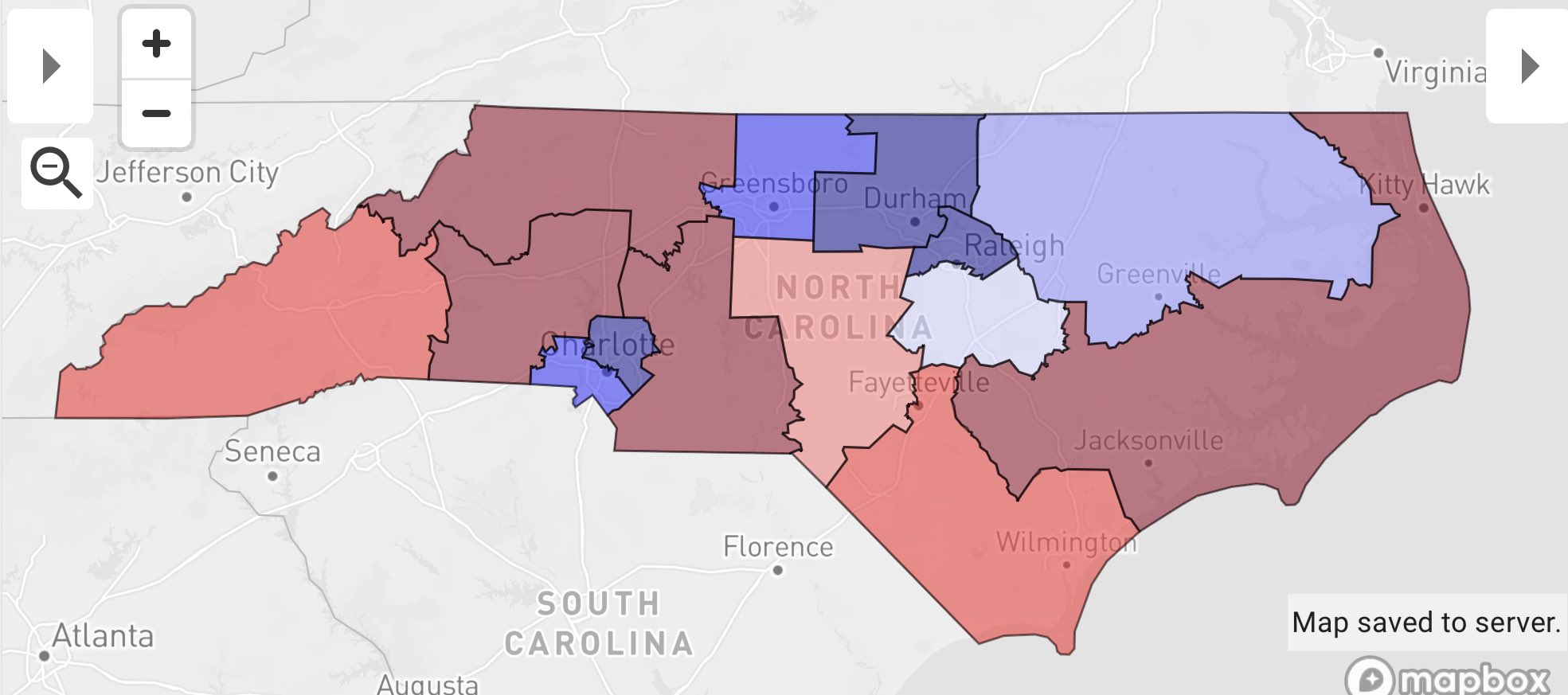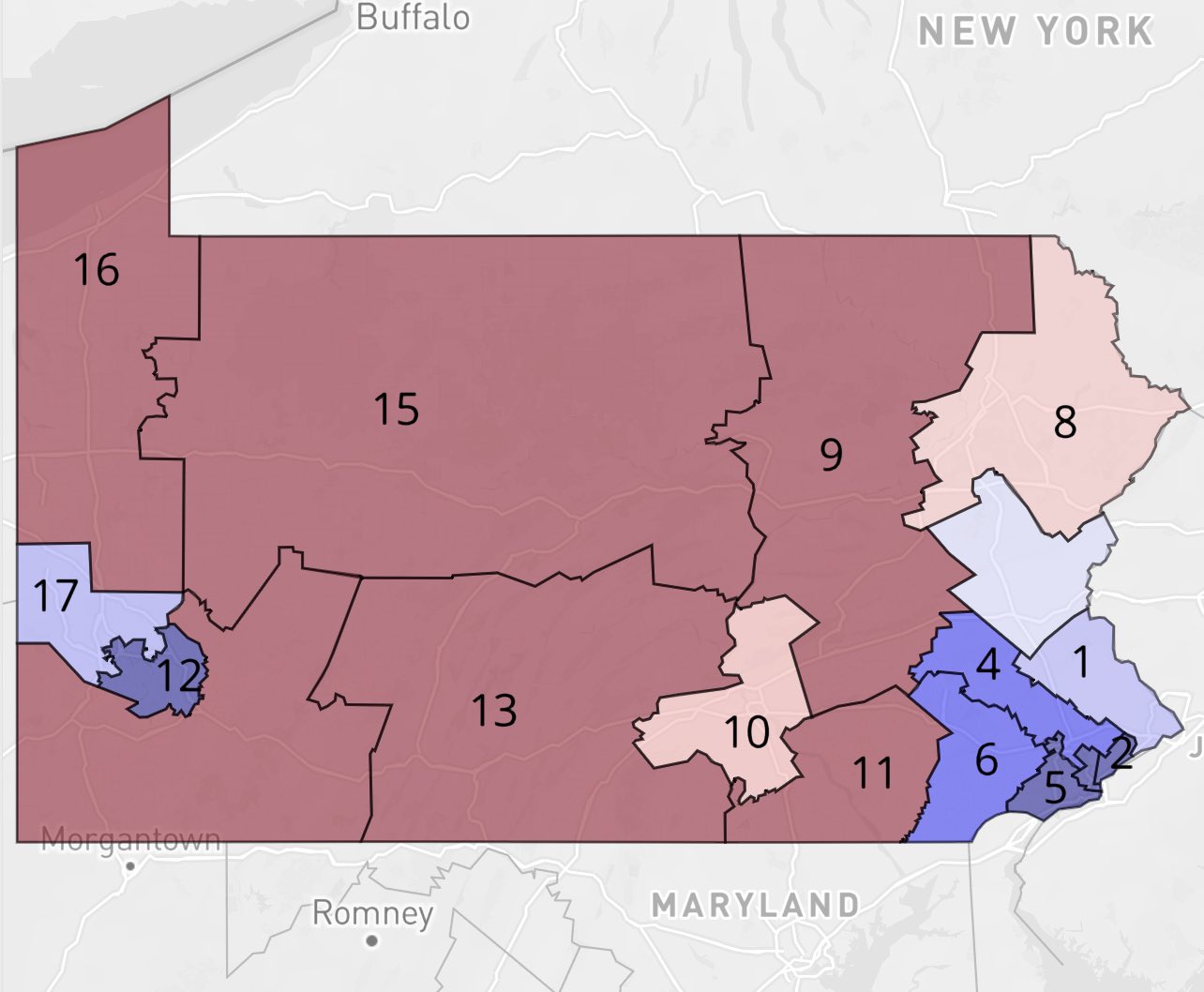Since the last update on congressional redistricting, there have been substantive changes in the playing field in the decennial process. Despite what seemed to be hopelessly bad turf for the Democratic Party, they have managed to turn the tables and gain a narrow edge over the Republicans. In total, of the 44 states that have finished redistricting so far, the Democrats have a net gain of 12 seats. Republicans lost five seats. This is mainly due to a string of court, legislative, and commission victories in the Democrats’ favor.
So far, there has only been one major setback in redistricting for the Democrats. This setback was an unfavorable U.S. Supreme Court ruling. The ruling said that Alabama’s current congressional did not violate the Voting Rights Act. This was despite the state only having one Black-majority district (out of seven) — 14% of the seats — for its 27% Black population. The result is that Democrats were unsuccessful in securing another safe seat in the deep-red state. Had the Supreme Court upheld a lower court’s ruling, the party would have gained a seat here. Democrats even could have gained a seat in South Carolina and Louisiana, which only have one majority-Black district each.
Besides that, though, Democrats seem to have caught every other break that came its way. It ranges from court decisions, to commission tiebreaking votes, and legislative victories even in states not controlled by the party!
One of the latest developments is in North Carolina, where a three-judge panel put in place a new map Wednesday. The action came after the liberal North Carolina Supreme Court found previous Republican gerrymanders unconstitutional. This new map features six Democratic-leaning seats, seven Republican-leaning seats, and one highly competitive seat.
The previously-enacted map, on the other hand, had just three Democratic-leaning seats and a whopping 10 Republican-leaning seats. (The map used in 2020 had five Democratic-leaning seats and eight Republican-leaning seats. North Carolina gained a seat after reapportionment.)

This map is one of the fairest maps the state has seen in a while. It matches up neatly with the 2020 presidential results, where Donald Trump won just under 50 percent of the votes. (President Joe Biden won 48 percent.)
Though Republicans are still trying to make a final appeal to the state Supreme Court, the lawsuit is likely dead on arrival, given the court’s rejection of previous Republican maps.
It is possible that this map will change throughout the decade, though. As this map is likely only going to last for one election cycle, if Republicans win back the state Supreme Court in a judicial election this fall, they could pass a map more favorable to them. The Democratic governor lacks veto power in this state.
A new map was also approved on Wednesday up in Pennsylvania. After the Democratic governor vetoed Republican gerrymanders earlier, the Pennsylvania Supreme Court took over redistricting. The final decision was a least-change map that eliminated a Republican district. (Pennsylvania lost a seat in reapportionment.)
The map features six Democratic-leaning seats, seven Republican-leaning seats, and three highly competitive seats.

Next door in New York, the Democratic state legislature was also able to wham through an egregiously biased map. The new map was able to expand the number of Democratic-leaning districts from 17 to 20, despite the state losing a House seat in reapportionment.
This map features 20 Democratic-leaning seats, four Republican-leaning seats, and two highly competitive seats. The competitive seats will be held by Democrats.


Such a map was possible because the state legislature had the power to reject an independent redistricting commission’s proposals. Had the commission’s proposal been enacted instead, there would likely only have been a reduction in one or two GOP-leaning seats.
In Florida and Missouri, none of which Democrats control, there is still good news for the party here. In Missouri, a map that would remove a Democratic-leaning seat in Kansas City was rejected by the Republican legislature. This means that a least-change map is likely in the state.
In Florida, Republicans are in a full-blown battle over redistricting, with neither the House, Senate, nor governor agreeing on a proposal. (This is despite the Republicans having a trifecta here.) One of the biggest disagreements is over the new seat Florida gained in reapportionment.
Gov. Ron DeSantis proposed an egregiously biased map that would all but doom the fates of two Democratic incumbents. The House’s maps would solidify Republican seats, but only eliminate up to one Democratic seat. The Senate’s map would be least-change and introduce a new highly competitive seat.
The legislature has been opposed to enacting DeSantis’s gerrymanders, which eliminates multiple majority-Black districts and removes a Voting Rights Act-protected district. However, he holds veto power over the legislature’s proposals. Whichever map wins out, in the end, will be sure to determine the fate of up to three House seats, which could decide the House majority this fall.
Ohio‘s Republican gerrymander was also tossed out by the Ohio Supreme Court. The gerrymander would have reduced the number of Democratic seats down to two (out of 15) from three (already an insane gerrymander!). For reference, the state is over 40% Democratic. This is great news for the Democrats because any new map will still be fairer than the previous proposal. New maps should be released within the next few weeks.
Kansas‘s new map, which makes the one Democratic-leaning district there much more competitive, could also be invalidated by the liberal-dominated state Supreme Court. Lawsuits have already been filed, and a decision is expected in a few weeks.
All of these victories spell out major news for the Democrats this fall. Compounded with previous legislative victories in New Mexico, Nevada, Oregon, and Illinois, as well as the un-gerrymandering of Michigan, the Democrats are in a much better position to retain the House this fall than they previously were.
